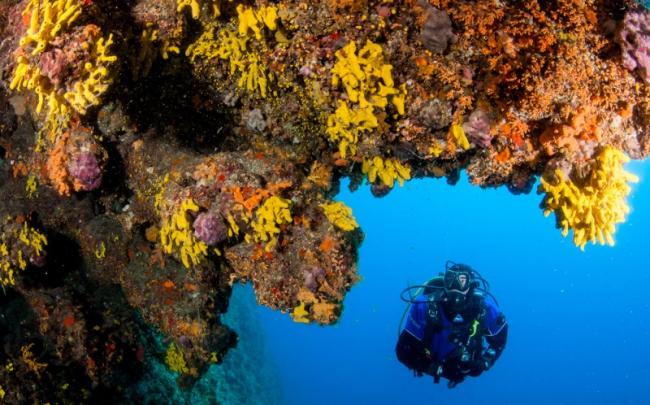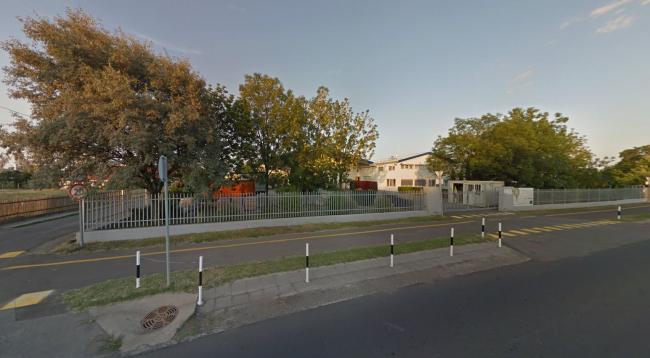
6. With or without a dive light
Some of the readers of the previous blog entry sent a message to me. They warned me that I have made grammatical mistakes (repeating the same word, that have been corrected), and there were others who have been asking for more information and videos about the diving at the Adriatic Sea, made with and without the help of our dive light. There are people who ask me why is the red and yellow color visible 30 meter below the surface, as they vanish in the upper layers of the water (see the picture of the star below). It is advised to talk about this.
It is already known that the deeper the water the less you can see the colours, but why does this happen?
On the picture below you can see the categories of the electromagnetic wavelengths, and the visible light. On the picture from right to left the energy of the wavelengths becomes bigger. In our case this means that within the visible range, the red colour that is on the right side of the picture has the less energy, however, the blue colour on the left has the most. The bigger the energy the easier it is for the light to go through the obstructions. On the picture, it is visible that the X-rays have more energy than the range of the visible light, as everyone knows the X-rays are able to partially light through the human body.

For the divers it is ideal that the stronger the light, the more water it can go through. Thus, 40 m below the surface, you can only see grey and blue colours, as at this depth every light, which has less energy, vanishes.
Why can we see the colours 40 m below the surface?
The answer is simple. The white light of our high quality dive light (similarly to the light of the Sun) is a mixed light, which has every wavelength in it. The Sparklights Action Light dive lights’ colourtemperature is 5500 K, to make you able to see everything in the most natural way.
Unfortunately, the light of our dive light vanishes in the water, so does the natural light, form these colours the red one is the first to vanish. Here, instead of the distance between our eyes and the object we are looking at, we have to take into consideration the distance between the dive light and the object. This means that, you have to be the closest to everything t see nearly natural colours. Accoording to this, you have to be 2-3m close to the object, however, the most ideal distance is 1 m.

Made without and with the help of the Sparklights Action Light dive light
You can find the dive light by which these pictures and the video were made:
https://sparklights.eu/product/view/7f_low_package_white-1
https://sparklights.eu/product/view/7f_low_package_grey-4
Finally, here you can see a brief video in which it is presented what you can see in the Adriatic Sea, under the water with and without the help of the Sparklights dive light.
 en
en EUR
EUR

